Gold exhibit in NYC: Pre-colonial Filipinos were not savages: organizers
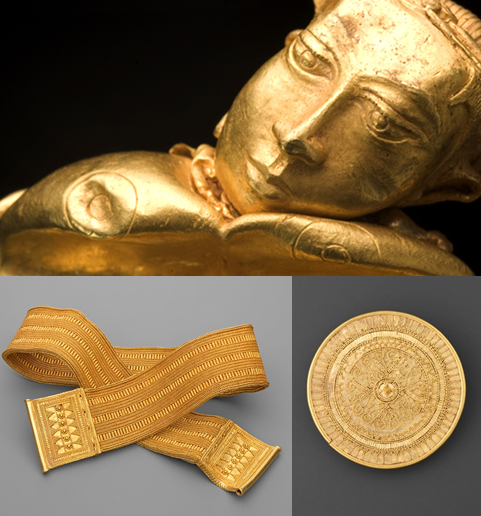
‘The gold collection celebrates the sophisticated cultures’ that existed in the Philippines before colonization in the 16th century:’ Asia Society
Once upon a time when the Philippines was just an assortment of scattered islands and each community was ruled by a ‘datu,’ there was evidence suggesting a craftsman way of life for the indigenous people. Using handmade tools, they hunted for food, built dwellings, and fashioned clothing from whatever they could find in the forest.
Their way of life may seem straightforward and simple, but what we do not know is that they liked to adorn themselves and crafted their own jewelry using whatever material was available.
Gold was abundance then in areas now known as Butuan, Eastern Visayas, Mindoro, and Surigao. The people created belts, necklaces, masks, rings, leg ornaments, even ceremonial weapons, and wore these gold objects in rituals and celebration and to establish their rank in society.
The Filipino American community will be able to view these rare artifacts in an exhibit to be presented by the Asia Society from September 11, 2015 to January 3, 2016, said Consul General Mario de Leon Jr. He urged members of the community to “get involved.”
“We had a civilization even before the Spaniards reached our shores (in the 1500s),” said De Leon, speaking before a Town Hall meeting to announce the exhibit called “Philippine Gold: Treasures of Forgotten Kingdoms” to be presented by the Asia Society in cooperation of the Ayala Museum in Manila.
CEO and philanthropist Loida Nicolas Lewis said “now is a good time” to bring precious Philippine artifacts to New York as the Philippines is enjoying a measure of global recognition with its expanding economy and the Aquino Government’s continuing fight against corruption.
“The Philippines is on the rise,” said Lewis. “We are now the new Tiger in Asia, no longer the most corrupt.”
The gold collection, she continued, “is our King Tut,” a reference to the Egyptian pharaoh who reigned in the 1300s, and whose tomb was unearthed in the 1920s, sparking public interest in Egypt’s past.
This is the first time the gold objects will be traveling outside of Manila, disclosed Nina Capistrano-Baker, who is the consulting curator for the Ayala Foundation. The objects are mostly owned by private collectors, such as the Ayala Museum and architect Leandro Locsin and his wife Cecilia. The other objects are the property of the Bangko Sentral ng Pilipinas acquired during the time of then-Governor Jaime Laya.
The artifacts originally belonged to ancestral families and passed down as heirloom through several generations, said Capistrano-Baker. How they ended up in private collections can be traced to several factors, chief among them would be treasure hunters and the coming of the Western colonizers. She shared the story of one “Berto” who discovered a gold hoard near Butuan city in Mindanao. He had a gut feeling they might be valuable so he stashed the hoard in a sack by covering it with bananas. This collection found its way into private hands.
The gold objects to be exhibited in New York are all high-grade of anywhere from 18 carats to 24 carats; the purest is known as ‘dalisay.’ Anything lower than 12 carats would be copper, Capistrano-Baker said.
The exhibit is among the biggest hosted by the Asia Society and the most logistically ambitious.
The FilAm learned that the costs of transport, crating, insurance, and securing the collection from Manila to New York could be anywhere from $800,000 to $1 million.
“The value is immeasurable and incalculable,” said Capistrano-Baker when asked during the Town Hall meeting. “It has value in terms of its contribution to our knowledge of our historical past and its contribution to academic research.”
Organizers are hoping the four-month exhibit will bring pride to Filipino Americans and generate enough excitement to get them to visit the Asia Society.
There will be a Gala Night for about 200 patrons who have generously contributed to the project. It will be followed by a $500-plate dinner for the Filipino community who will be given an exclusive tour of the exhibit.
Programming will showcase Philippine music, theater, culinary specialties, and independent films. Certain Sundays will be devoted to family days. A ticket to Asia Society costs $12, but a group of 20 people or more gets a price of $10 per. Children from 6 to 9 years old are free.
There are talks to have the next Inuman at Pulutan event at the Asia Society, where a ticket will include access to the exhibit.
In the event that President Benigno Aquino III attends the UN General Assembly in September, there is the likelihood that an event will be planned with him and members of the diplomatic community in attendance.
“When Doris Magsaysay-Ho approached me about this project about seven months ago, I readily said yes I will help,” recalled Loida Nicolas Lewis.
“Many of the works, unearthed between the 1960s and 1981, affirm the unprecedented creativity, prosperity, and sophisticated metalworking tradition of the precolonial period,” said Asia Society President and CEO Josette Sheeran.
The organizers said the exhibit will seek to correct perceptions that precolonial Filipinos were savages.
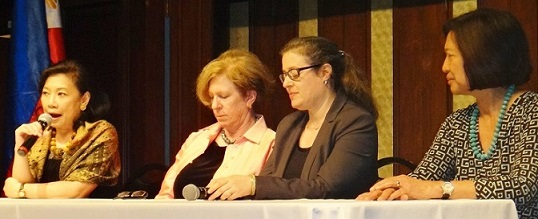
From left, Nina Capistrano-Baker of the Ayala Foundation, Rachel Cooper and Adriana Proser of the Asia Society, and Loida Nicolas Lewis. The FilAm Photo



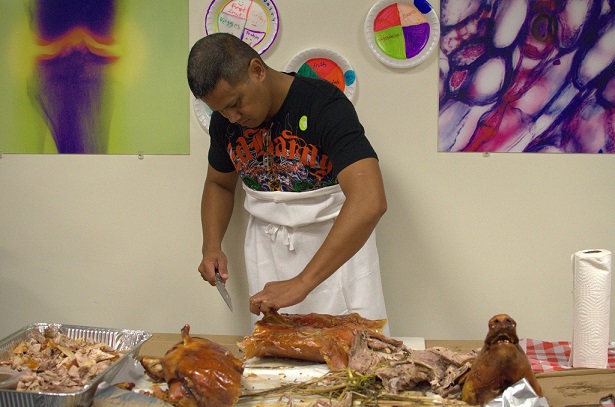
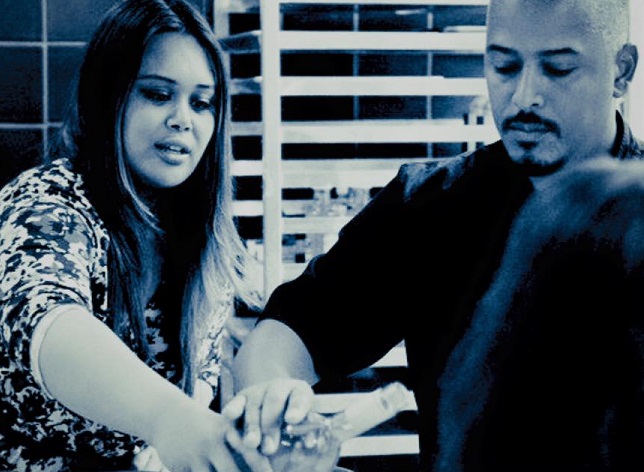
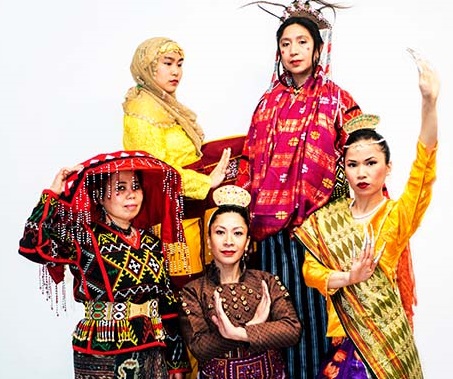
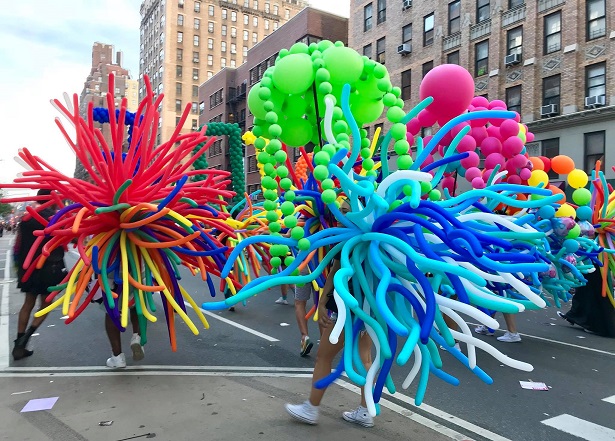
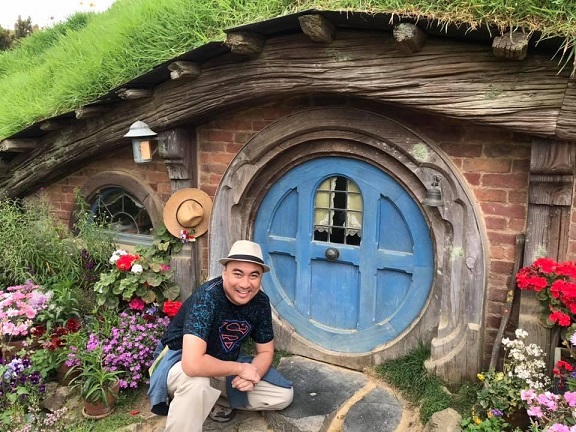
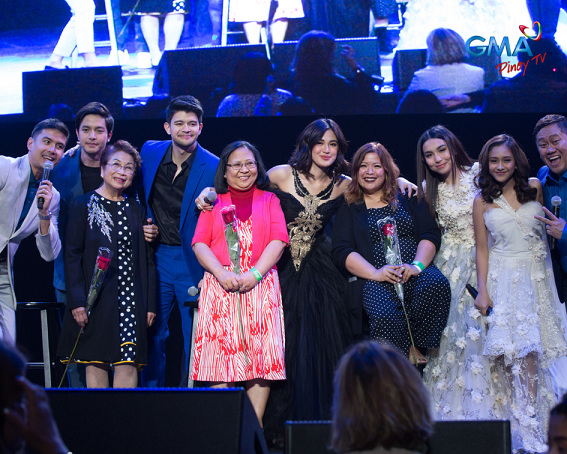




[…] exhibit, the first of its kind outside of the Philippines, showcases a collection of about 120 of gold objects excavated around Butuan from the 10th through […]